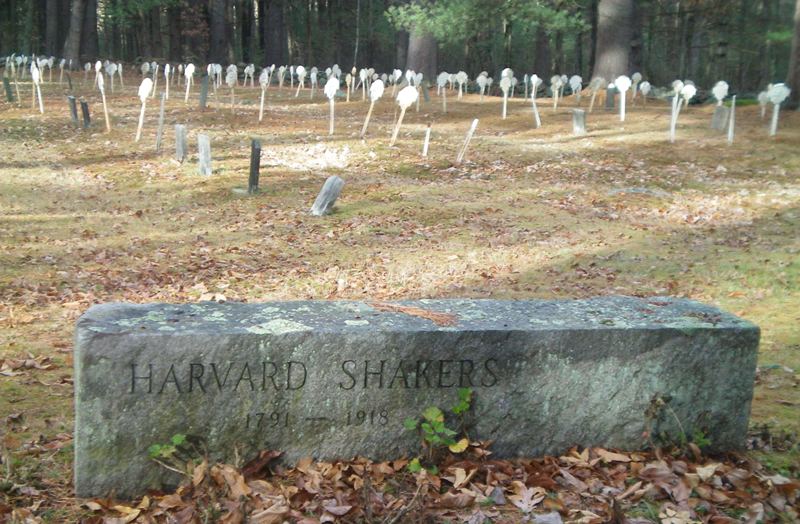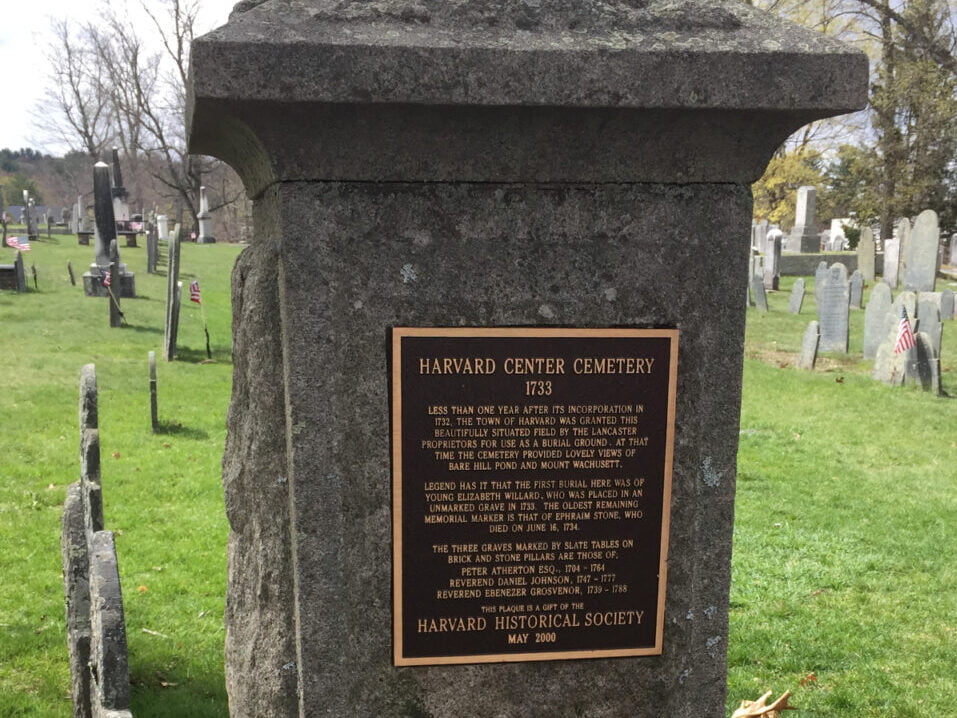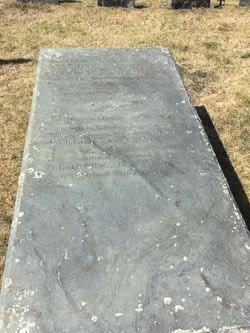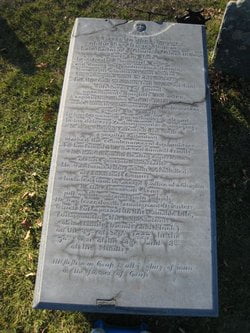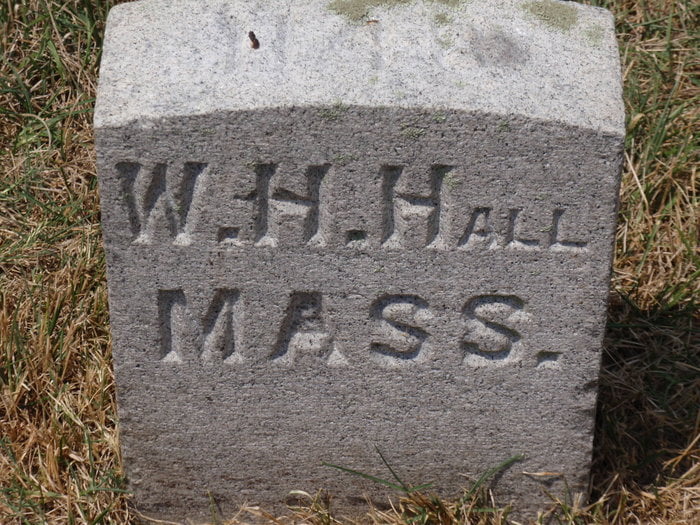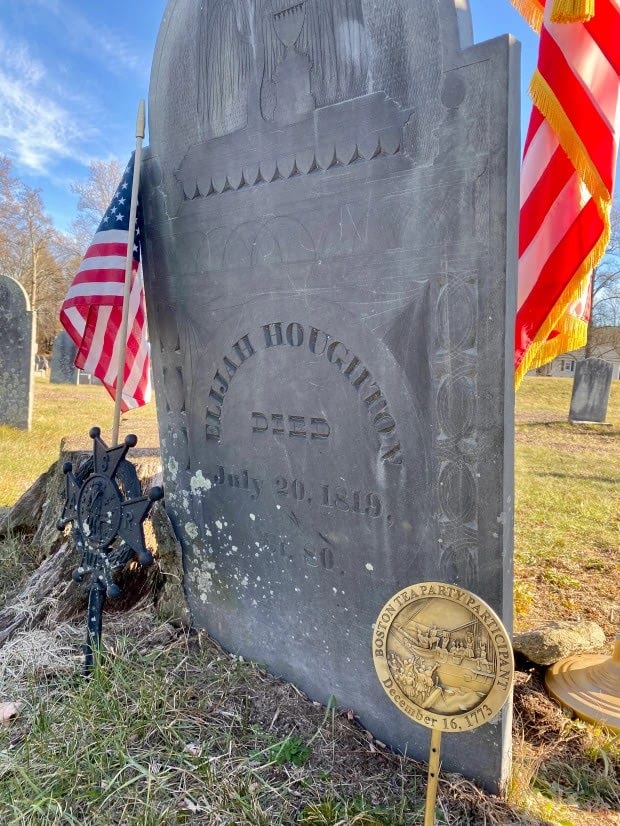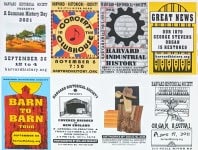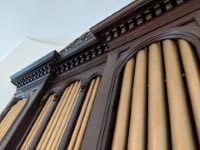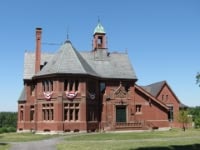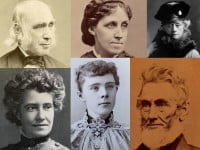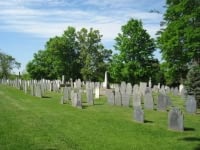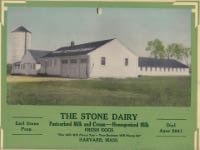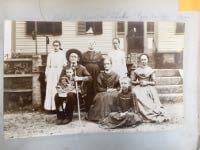Bellevue Cemetery
Still River Road, Harvard, Mass.By 1889 the Center Cemetery had become crowded, and the Cemetery Committee, created in 1888 and comprising three elected officials, was instructed to consider sites for a new burying ground. The first site, proposed in 1889, was on Depot Road opposite Mill Road, but the town voted to take no action. Townspeople were fixated on expanding the center cemetery, even though the possibilities were almost nonexistent, with the Common, the highway, and the Bromfield School hemming it in on three sides. Mr. H.P. Whitney, who lived at 7 Still River Road, offered to sell four acres of his meadowland next to the old cemetery, but in March 1891 the town decided he was asking too much money for land of which one third was unusable because of sunken boulders.
Having given up on adding land to the existing cemetery, the committee began a new search and in May 1891 suggested seven sites, which included the previously proposed land on Depot Road and the A.H. Turner land on a hilltop halfway between the center and Still River village. At Town Meeting the former received more than half the votes, while the latter received not a single vote. The town appropriated $800 for purchase of the land, to be called Brookside Cemetery, and the work began.
In March of 1892 Henry L. Warner, who in 1890 had donated $10,000 to establish the Warner Free Lectures, made another philanthropic offer to the town. He would provide a stone arched entryway for the new cemetery. In April, terms were set for the purchase of individual and family lots, and the first body was interred, that of Mr. John Hutchinson.
A special Town Meeting was called in September 1892 to consider a proposal from Mr. Warner, who wanted to reopen debate on the location of the new cemetery. He argued that the Brookside location was not an appropriately dignified and scenic place to honor the dead (despite the name’s attempt to make it sound idyllic). He pointed out that other towns had cemeteries with lovely hilltop views and were not surrounded by brooks and swamps such as Brookside was. The town voted against his proposal but did agree to appoint a committee to continue discussion with Mr. Warner.
In furthering what had become an impassioned cause, Warner made an unprecedented move. According to Anderson (“Directions of a Town”), Warner argued that the opinion of women should be taken into consideration, that this matter should not be one left in the hands of men only. Accordingly, Mrs. E.W. Farwell obtained 139 signatures in support of Mr. Warner. While women’s opinions must previously have come into play behind the scenes, especially in the matter of siting the Town Hall, this was the first time that Harvard women officially had a say in a civic decision.
The women’s support, considerably bolstered by Warner’s offer to purchase a more scenic site and pay $1,000 for its improvement, persuaded the town to change its vote, accept the gift, and relocate the cemetery. The new site was the rolling hilltop on Still River Road, almost the exact spot that had been turned down two years earlier. In March 1893 the town approved the new cemetery site and gave Warner the right to name it. He chose the name Bellevue, which reflected his belief that a beautiful site was important for a town’s burying place. Approaching the Hutchinson family with news that John would have to be dug up must have been awkward, at best. The stone archway, which Warner had already had delivered to Brookside, was moved to the new cemetery. It appears that the stone archway is no longer at Bellevue and a metal arch has been put in its place.




